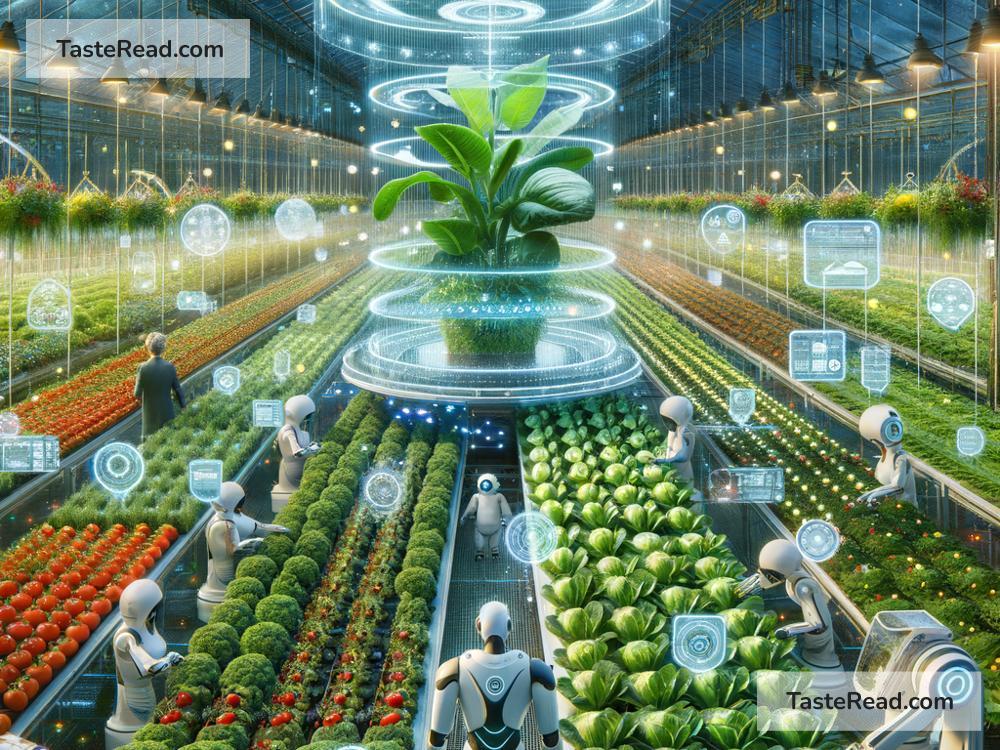The Impact of Technology on Food Production
Technology has changed how we live in many ways. One big area where technology has made a difference is food production. Today, thanks to modern tools and machines, farmers can grow food faster, cheaper, and more efficiently. Let’s explore how technology has impacted food production and helped us feed people around the world.
1. More Food, Less Effort
In the past, farming was hard work. Farmers had to do everything by hand or with basic tools. They planted seeds, watered crops, and harvested fruits and vegetables with lots of physical labor. It was slow, and they couldn’t produce enough food for everyone. But now, machines like tractors, crop planters, and automated harvesters reduce the need for manual work. These machines save time and help farmers grow and collect food on a much larger scale.
For example, a single farmer on a modern farm can manage hundreds of acres of crops with technology, something that used to require an entire team of farmworkers. This means farmers can grow more food to feed more people with less effort.
2. Smart Farming Technologies
In recent years, “smart farming” has become popular. Smart farming uses advanced technologies like sensors, drones, and artificial intelligence (AI). These tools help farmers monitor their crops in real-time and give them valuable information. For example, sensors can measure soil moisture, temperature, and nutrients. If the soil is too dry, farmers can add water automatically using irrigation systems connected to the sensors.
Drones can fly over fields and take detailed pictures of the crops. From these pictures, farmers can see which areas of the field are healthy and which need extra care. AI systems can analyze this data and suggest the best solutions to improve crop growth. This makes farming more precise and prevents waste, so farmers don’t use too much water, fertilizer, or pesticides.
3. Better Seeds and Crops
Technology has also helped scientists develop better seeds through methods like genetic engineering. With these advancements, scientists can create crops that grow faster, resist diseases, and survive difficult weather conditions like drought or heavy rain. For example, some genetically modified (GM) crops are designed to be pest-resistant, meaning farmers don’t need to use as many pesticides.
These stronger crops allow farmers to grow food even in areas that used to be challenging for farming. This is especially helpful in countries with poor soil or dry climates. By using better seeds, the amount of food grown around the world has increased, helping reduce hunger in many places.
4. Robots in Farming
As technology has advanced, robots are also becoming part of food production. Robots are used for planting, weeding, harvesting, and even packaging food. These machines work quickly and don’t get tired, which makes them ideal for repetitive tasks. For example, robot harvesters can pick fruits and vegetables more efficiently than humans, without damaging the crops.
Robots are especially helpful in large-scale farming operations, where speed and accuracy are important. Some robots can even sort and grade food to make sure only the best products go to stores. This has made the food production process more efficient and less wasteful.
5. Vertical Farming and Urban Agriculture
Population growth and limited land for farming have made food production challenging in cities. Technology has introduced solutions like vertical farming and urban agriculture. Vertical farming is a method of growing crops indoors in stacked layers, often using LED lights and hydroponics (a system that uses water instead of soil to grow plants).
These high-tech farms take up less space and can grow food year-round, regardless of the weather outside. In addition, they use less water and energy compared to traditional farming. Vertical farms are popping up in cities around the world, bringing fresh produce closer to urban communities and reducing transportation costs.
6. Reducing Waste with Technology
Food waste is a big problem worldwide. Millions of tons of food go to waste every year, even though many people are hungry. Technology is helping reduce food waste in several ways. For example, apps and online platforms connect farmers, grocery stores, and restaurants with people who can use surplus food. This ensures that extra food doesn’t go to waste.
In addition, food packaging technology has improved. Special packaging can make food last longer, reducing spoilage during transport. Smart sensors are even used in food storage areas to track temperature and freshness, making sure food stays safe to eat for longer periods.
7. Challenges and Concerns
While technology in food production has many benefits, it also comes with challenges. Machines and advanced technologies can be expensive, and not all farmers can afford them. Some people worry about the environmental impact of large machines and GM crops, like soil degradation or the loss of natural plant varieties.
Additionally, high-tech systems require knowledge and training, which can be a barrier for farmers in poorer regions. It’s important to find ways to make technology more accessible and sustainable for everyone.
Conclusion
Technology has had a huge impact on food production. It has made farming faster, smarter, and more efficient, helping feed a growing global population. From machines and robots to genetically modified crops and vertical farming, technology is revolutionizing the way we grow, harvest, and distribute food. While there are challenges to overcome, the future of farming looks promising thanks to these advancements. If we continue to innovate and use technology wisely, we can ensure that the world’s food supply remains steady and accessible for generations to come.


